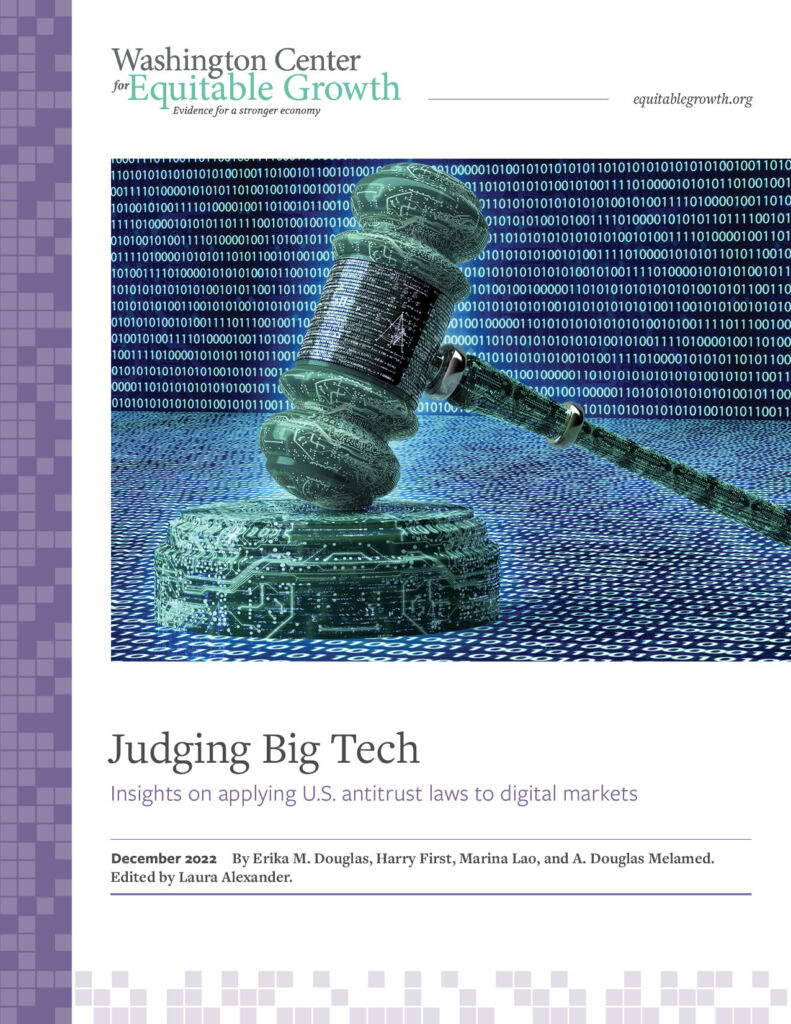Judging Big Tech

The importance of digital information technology and communications giants to the U.S. economy and society today is undeniable. The business strategies of these companies are increasingly capturing the attention of the U.S. Congress, the White House, federal agencies, and governors and state legislatures across the nation. This increased focus is not surprising, given that these companies—including Amazon, Apple, Alphabet’s Google unit, and Meta Platform’s Facebook and Instagram units—are the main arteries for the U.S. public’s social and commercial engagement online.
These digital information technology and communications companies hold tremendous commercial and political power. That’s why antitrust enforcement agencies are particularly focused on how these firms are expanding and entrenching their businesses and how those decisions affect U.S. consumers, competitors, and workers. The problem from an antitrust enforcement perspective, however, is that the business practices and strategies playing out across the U.S. information technologies and communications sectors and beyond are not always easily connected to the historic applications of U.S. antitrust law, which consists of laws and precedents dating back to 1890 and draws on even earlier common law principles.
The four essays in this book seek to bridge this gap and provide objective insights, unfiltered through the lens of litigation or business strategy, on how courts and litigants can successfully navigate these relatively unchartered waters to apply our nation’s century-old antitrust statutes to today’s U.S. digital information technology and communications industries in a way that is consistent with the central goal of antitrust: to protect and promote competition. Rather than arguing which side should win, the authors of these essays seek to unpack the correct analytical framework and identify the dispositive facts that judges need to understand to rule fairly and effectively in antitrust cases involving modern technology markets.
Indeed, antitrust cases in modern technology markets present several challenges for antitrust enforcers and courts alike. Thoughtful analysis and tools are needed for making sense of technology markets and the competitive dynamics within those markets in order to enable courts and antitrust enforcers to apply these longstanding, fundamental laws to allegedly anticompetitive practices in the context of new technologies. Antitrust laws are broad and designed to evolve with markets and technologies, but applying them to these new technology markets still raises hard questions.
Each essay discusses a fundamental legal issue and how that issue may arise in an antitrust case involving digital platforms, then offers guidance on how that issue can be addressed in a way that is consistent with existing laws and precedent but cognizant of the realities of modern technology markets. These four essays together are designed to help judges, antitrust enforcers, and policymakers interpret U.S. antitrust law to fit new and complex digital markets and to address the novel types of market power and the exercises of market power that plague those markets—the consequences of which cascade into other key economic sectors in the United States.

